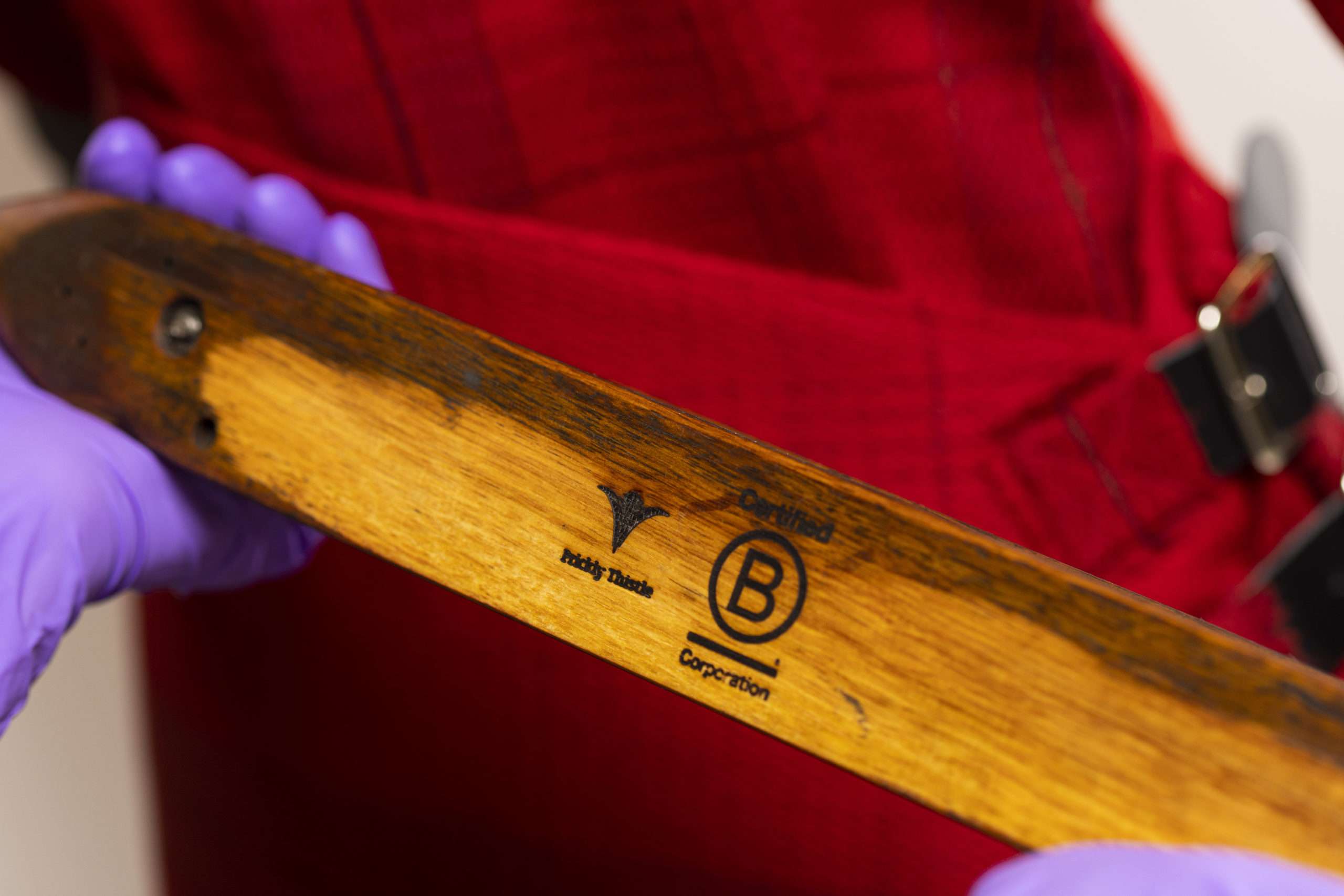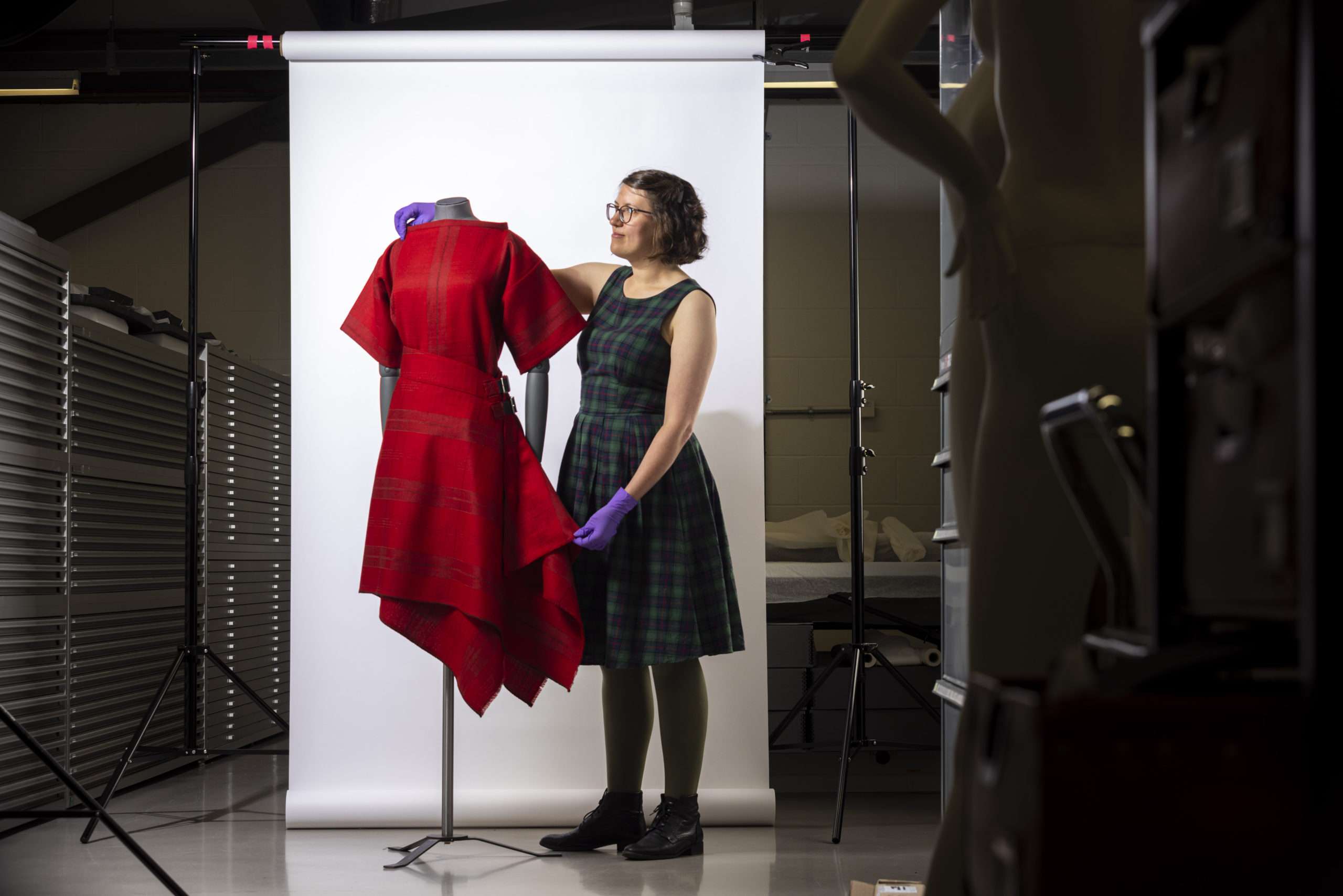National Museums Scotland has revealed a new collection of contemporary Highland dress, documenting a vibrant industry in Scotland today. Eight outfits have been added to National Museums Scotland’s world class holdings of tartan and Highland dress, enabling it to tell the story of Scotland’s iconic costume in the 21st century. These important acquisitions mark the culmination of a five-year project supported by the William Grant Foundation, which has fostered ground-breaking research into the Museum’s unparalleled collection of historic tartans and Highland dress.
The latest stage of the project offers a snapshot of the variety of approaches to making and wearing Highland dress in the 21st century. From innovative new makers like Prickly Thistle and Acme Atelier, to long established brands including Kinloch Anderson and Chisholms Highland Dress, these eight outfits celebrate some of the modern craftspeople, designers and outfitters working in Scotland. A new online hub has launched on nms.ac.uk, offering detailed images and descriptions of the new acquisitions along with three new films featuring interviews with designers and makers. In 2021, kilt-making and sporran-making were added to the Heritage Craft Association’s red list of endangered crafts, and sgian dubh-making was added in 2023. The pieces collected for this project are representative of a specialist but vibrant industry which is attracting new makers, creating jobs and utilising technological advancements whilst preserving the knowledge of traditional techniques. Now held in the National Collection, the outfits document these highly-specialised skills as they continue to evolve and adapt.
A flourishing living tradition

William Grant Foundation Research Fellow, Rosie Waine said: “There is a perception that Highland dress never changes, but through working with contemporary makers, this project highlights a flourishing living tradition that continues to adapt and evolve. These new acquisitions showcase incredibly skilled makers and production from across the country. They join our existing collection to provide a comprehensive timeline of Highland dress from the 17th century to the modern day, highlighting its role as an icon of an ever-changing Scotland.”
Once considered an emblem of clan society, the more modern tartan fashions reflect contemporary concerns. Lochcarron of Scotland’s ‘Hame’ tartan was designed during the COVID-19 pandemic to capture feelings of homecoming and comfort. These designs highlight a 21st century approach to production with most new tartan being created through Computer Assisted Design (CAD) programmes such as ScotWeave. Sustainability and efficiency throughout the design process is a key concern for modern mills and makers. A tartan t-shirt and kilt by Prickly Thistle Scotland offer a fresh take on Highland dress for women whilst promoting small batch production. National Museums Scotland has also acquired an antique boat shuttle (a tool used in the weaving process) from the firm, laser engraved with the B Corp Certification mark which they were awarded in 2021. A focus on zero waste design is demonstrated by a sgian dubh acquired from Gordon Nicolson Kiltmakers. The traditional knife is made from offcuts of African blackwood left over from the bagpipe-making process.
National Museums Scotland holds objects spanning over five centuries of Highland dress in its collections, some of which are currently on loan to the V&A Dundee for their ground-breaking exhibition Tartan which demonstrates an enduring appetite for the iconic pattern.
Visit the online hub at www.nms.ac.uk/TartanToday
Main photo: William Grant Foundation Research Fellow, Rosie Waine with a skirt and top by Prickly Thistle. Photo: Duncan McGlynn.

